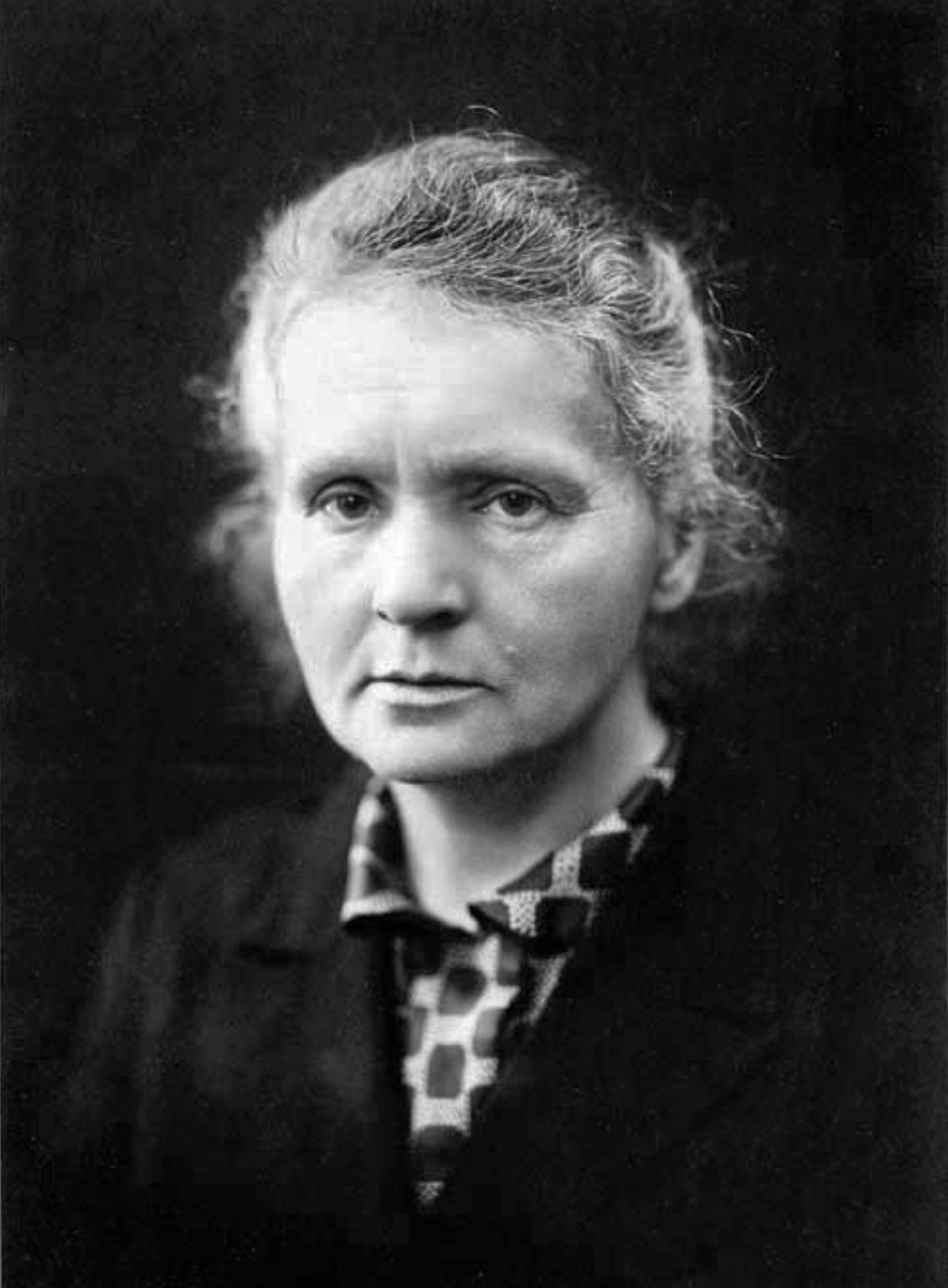 Physicist Awarded Nobel Prizes for Physics (1903) and Chemistry (1911), Curie is most well known as a woman of many "firsts", including becoming the first woman to awarded a Nobel Prize, first person ever to be awarded two Nobel Prizes, and the first woman to hold a chair position at the Sorbonne, where she both taught classes and oversaw scientific study for 20 years.
Physicist Awarded Nobel Prizes for Physics (1903) and Chemistry (1911), Curie is most well known as a woman of many "firsts", including becoming the first woman to awarded a Nobel Prize, first person ever to be awarded two Nobel Prizes, and the first woman to hold a chair position at the Sorbonne, where she both taught classes and oversaw scientific study for 20 years.
Curie worked alongside her husband Pierre, the pair discovering the radioactive elements polonium and radium, and developing and promoting new ideas about energy and matter.
Following Pierre Curie's death in 1906, Marie continued work focused on the study of the properties of radium and served during World War I, leading directed radiation therapy services and transporting mobile xray units to by ambulance to the front lines. Curie's dedication to scientific method, research, discovery and the therapeutic applications of radiation have earned her a place in history as one of the most revered scientists of the 20th century.
Sources: "Curie, Marie [Sklodowska, Maria]." The Palgrave Macmillan Dictionary of Women's Biography, edited by Jennifer S. Uglow, et al., Macmillan Publishers Ltd, 4th edition, 2005. Credo Reference, https://sc4.idm.oclc.org/login?qurl=https://search.credoreference.com/content/entry/macdwb/curie_marie_sklodowska_maria/0?institutionId=5065. Accessed 25 Jan. 2019.
Marie Curie – Facts. NobelPrize.org. Nobel Media AB 2019. Fri. 25 Jan 2019. <https://www.nobelprize.org/prizes/physics/1903/marie-curie/facts/>
"Marie Curie." Great Lives: A Century in Obituaries, Ian Brunskill, Collins, 1st edition, 2005. Credo Reference, https://sc4.idm.oclc.org/login?qurl=https://search.credoreference.com/content/entry/collinsgl/marie_curie/0?institutionId=5065. Accessed 25 Jan. 2019.
Image Credit: Marie Curie, c.1920.[Public domain], via Wikimedia Commons
